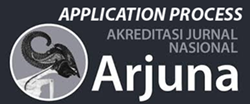Pengaruh Karakteristik Peserta, Desain, dan Lingkungan Pelatihan Terhadap Peningkatan Kompetensi Peserta Pelatihan Budidaya Lebah Madu CV. Flora Nauli
DOI:
https://doi.org/10.59653/jimat.v2i01.305Keywords:
competency, honeybee, trainingAbstract
Flora Nauli is one of the farms in Pematang Siantar that provides training in honey bee cultivation. The purpose of this research is to determine the influence of participant characteristics, training design, and training environment on increasing the competency of Flora Nauli honey bee cultivation training participants in Simalungun Regency. The number of respondents in this research was 30 farmers. This research variable includes participant characteristics (X1): age, education level, experience, and business scale indicators, the training design (X2) includes: instructor, materials, and methods, the environment variables (X3) include: physical and non-physical environments, and participants' competency level variables (Y) are measured through participants' cognitive, affective, and psychomotor. Data analysis uses qualitative, quantitative, and multiple linear regression methods, with interviews and questionnaires used for data collection. The results of this research show that participant characteristics, training design, and training environment significantly increase the competency of training participants. Partial participant characteristic variables did not have a significant effect, while design and training environment variables significantly increased participant competency. The participant competency level variable also shows an average score of 3.87, which is a very good category. This research shows that training programs have an important role in improving human resource competence.
Downloads
References
Azizah, S., Putritamara, J , A., Febrianto, N . (2019). Aspek Kehidupan Petani Gurem. Malang: UB Press
Badan Pusat Statistik. (2022). Produksi Madu Hasil Hutan Indonesia. https://dataindonesia.id/agribisnis-kehutanan/detail/produksi-madu-indonesia-sebanyak-189780-liter-pada-2021
Fathurrahman dan Dewi, R. O. P. (2019). Manajemen Sarana dan Prasarana Pendidikan dalam Mendukung Proses Belajar Siswa di SDN Puter 1 Kembang bahu Lamongan. Jurnal Reforma. 8(1): 172-178. https://doi.org/10.30736/rfma.v8i1.141
Gustina, A. (2015). Pengaruh Kualitas Pelatihan dan Kondisi Lingkungan Pelatihan Terhadap Efektivitas Pelatihan Disentra Pendidikan BRI Yogyakarta. Yogyakarta: Universitas Negeri Yogyakarta.
Grossman, R and Salas E. (2011). The Transfer of Training: What Really Matters. International journal of training dan development. 15(2): 103–120. https://psycnet.apa.org/doi/10.1111/j.1468-2419.2011.00373.x
Hambali, R. (2005). Faktor-Faktor yang Mempengaruhi Motivasi Beternak Domba. Bogor: Institut Pertanian Bogor.
Kementerian Kesehatan Republik Indonesia. (2021). Kelompok Usia: Usia Produktif 20-59. Jakarta: Kementerian Kesehatan Republik Indonesia. https://ayosehat.kemkes.go.id/kategori-usia/usia-produktif
Kurnia, E., Riyanto, B. and Kristanti, N. D. (2019). The Effect of Age, Education, Livestock Ownership and Length of Farming on Making Fill in Rumen of Cattle of Mol Behavior in Kut Lembu Sura. Jurnal Penyuluhan Pembangunan. 1(2): 39- 40. https://doi.org/10.34145/jppm.v1i2.16
Lestariningsih, M., Basuki, dan Endang. Y. (2018). Peran serta Wanita Peternak Sapi Perah dalam Meningkatkan Taraf Hidup Keluarga. EKUITAS (Jurnal Ekonomi dan Keuangan). 12(1): 121–141.
Makatita, J., Isbdani, dan Dwidjatmiko, S. (2014). Tingkat Efektivitas Penggunaan Metode Penyuluhan Pengembangan Ternak Sapi Potong di Kabupaten Buru Provinsi Maluku. Agromedia: Berkala Ilmiah Ilmu-ilmu Pertanian. 32(2): 64–74. https://doi.org/10.47728/ag.v32i2.95
Manyamsari, I dan Mujiburrahmad. (2014). Karakteristik Petani dan Hubungannya dengan Kompetensi Petani Lahan Sempit (Studi Kasus: Di Desa Sinar Sari Kecamatan Dramaga Kab. Bogor Jawa Barat). Jurnal Agrisep Unsyiah. 15(2): 58–74.
Ngure, H. M and Juma, D. (2018). Factors Influencing Management Training Effectiveness in Commercial Banks in Kenya: A Case Of Co-Operative Bank of Kenya, Nairoby County. Strategic Journal of Business & Change Management. 5(2): 1387–1414.
Setiawan, T. (2012). Manajemen Sumber Daya Manusia (Kinerja, Motivasi, Kepuasan Kerja dan Produktivitas). Jakarta: Platinium.
Slameto. (2010). Belajar dan Faktor-faktor yang Mempengaruhinya. Bandung: Rineka Cipta.
Sugiyono. (2017). Metode Penelitian Kuantitatif, Kualitatif, dan Kombinasi (Mixed Methods). Bandung: Alfabeta CV.
Suhartini, Y. (2019). Pengaruh Materi dan Metode Pelatihan terhadap Kemampuan Kerja Karyawan pada BPR Bantul, Yogyakarta. Akmenika: Jurnal Akuntansi dan Manajemen. 16(2): 237–254. http://dx.doi.org/10.31316/akmenika.v16i2.392
Utami, L. S., Baba, S., & Sirajuddin, S. N. (2015). Hubungan karakteristik peternak dengan skala usaha ternak kerbau di Desa Sumbang Kecamatan Curio Kabupaten Enrekang. JITP, 4(3), 146-150.
Usman, M, U. (2002) Menjadi Guru Profesional. Bandung: Remaja Rosdakarya.
Wulandari, T. N., Saridewi, T. R. dan Dayat. 2020. Peningkatan Kapasitas Petani dalam Pengendalian Oorganisme Pengganggu Tanaman pada Budidaya Cabai Merah. Jurnal Inovasi Penelitian. 1(13): 647-658.
Downloads
Published
How to Cite
Issue
Section
License
Copyright (c) 2023 Chichi Novianda, Siti Azizah

This work is licensed under a Creative Commons Attribution-ShareAlike 4.0 International License.
Authors who publish with this journal agree to the following terms:
- Authors retain copyright and grant the journal right of first publication with the work simultaneously licensed under a Creative Commons Attribution-ShareAlike that allows others to share the work with an acknowledgement of the work's authorship and initial publication in this journal.
- Authors are able to enter into separate, additional contractual arrangements for the non-exclusive distribution of the journal's published version of the work (e.g., post it to an institutional repository or publish it in a book), with an acknowledgement of its initial publication in this journal.
- Authors are permitted and encouraged to post their work online (e.g., in institutional repositories or on their website) prior to and during the submission process, as it can lead to productive exchanges, as well as earlier and greater citation of published work (See The Effect of Open Access).























